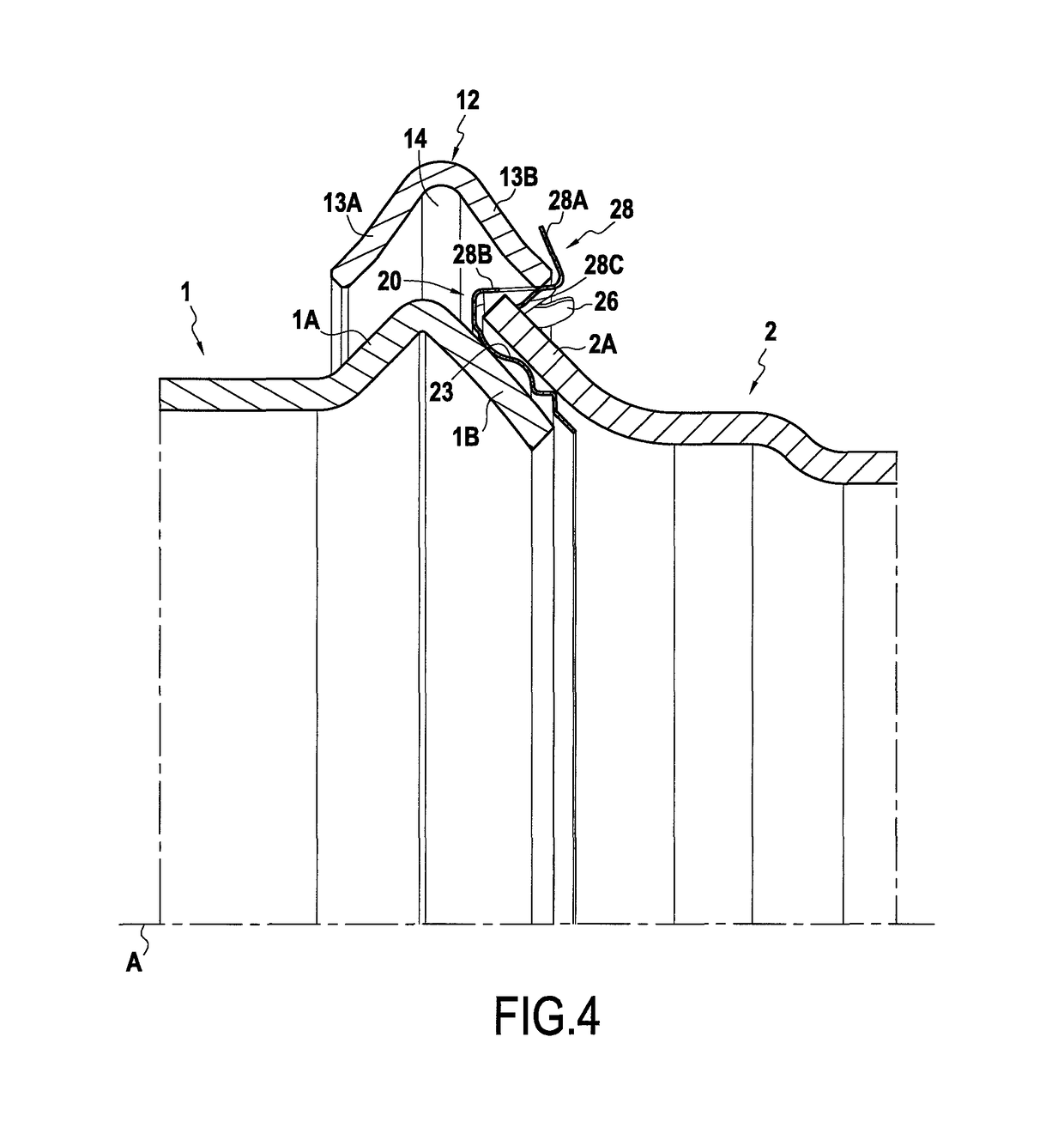Clamping system comprising a collar and individual pre-attachment clips
a technology of pre-attachment clips and clamping systems, which is applied in the direction of flanged joints, sleeve/socket joints, rod connections, etc., can solve the problems of affecting the surface of the parts in question, their geometrical shapes are relatively complex,
- Summary
- Abstract
- Description
- Claims
- Application Information
AI Technical Summary
Benefits of technology
Problems solved by technology
Method used
Image
Examples
Embodiment Construction
[0064]The collar of the clamping system of the present specification is, for example, generally analogous to the one that is described in Documents EP 1 451 498 and EP 2 598 785.
[0065]Thus, as can be seen, in particular, in FIGS. 1 to 3, said collar 10 has a band 12 that has a first flank 13A and a second flank 13B between which an inside trough 14 is defined.
[0066]Throughout the description below, and unless otherwise indicated, the term “inside” is used to describe elements that face towards the axis A of the collar or that are closer to that axis A relative to other elements that are said to be “outside”, “outside” elements also being those that face away from the axis A.
[0067]The clamping system serves to connect two tubes together via their ends. Thus, FIG. 1 shows a first tube 1 and a second tube 2 respectively having a first clamping surface 1A and a second clamping surface 2A that project relative to their respective cylindrical outside surfaces. For assembling together the ...
PUM
 Login to View More
Login to View More Abstract
Description
Claims
Application Information
 Login to View More
Login to View More - R&D
- Intellectual Property
- Life Sciences
- Materials
- Tech Scout
- Unparalleled Data Quality
- Higher Quality Content
- 60% Fewer Hallucinations
Browse by: Latest US Patents, China's latest patents, Technical Efficacy Thesaurus, Application Domain, Technology Topic, Popular Technical Reports.
© 2025 PatSnap. All rights reserved.Legal|Privacy policy|Modern Slavery Act Transparency Statement|Sitemap|About US| Contact US: help@patsnap.com



